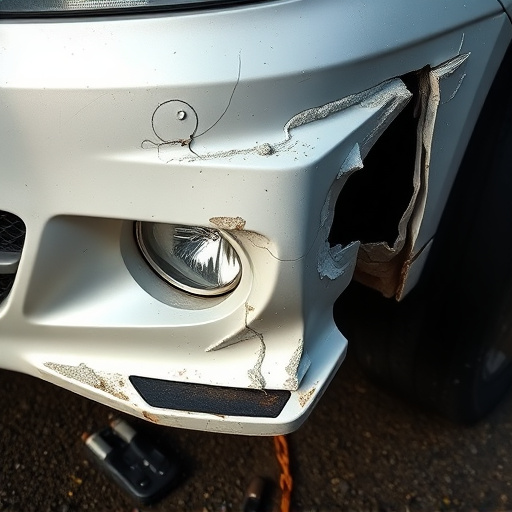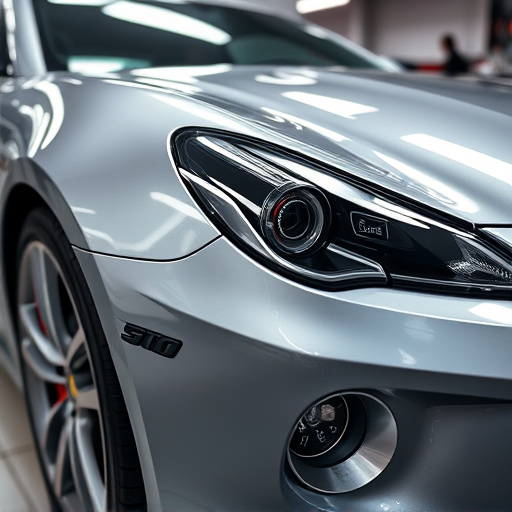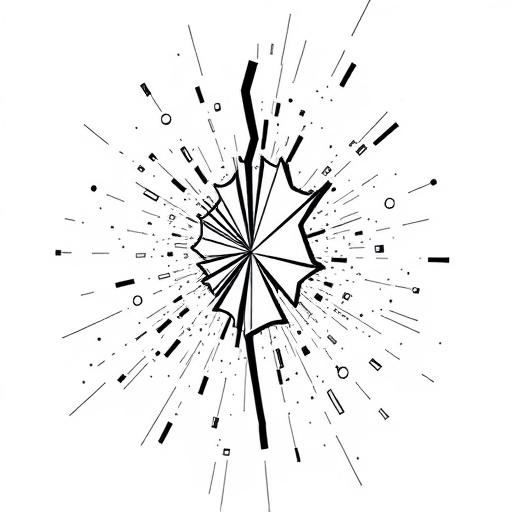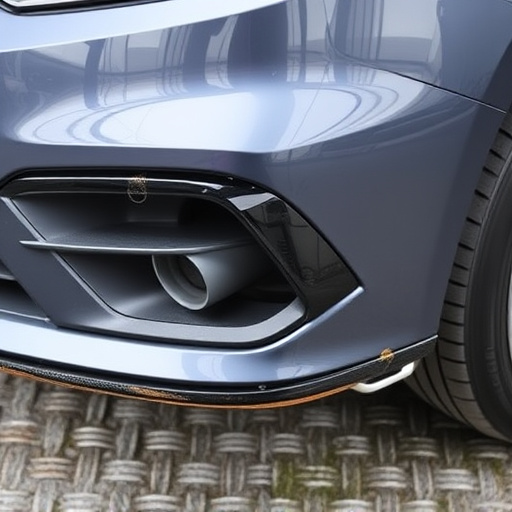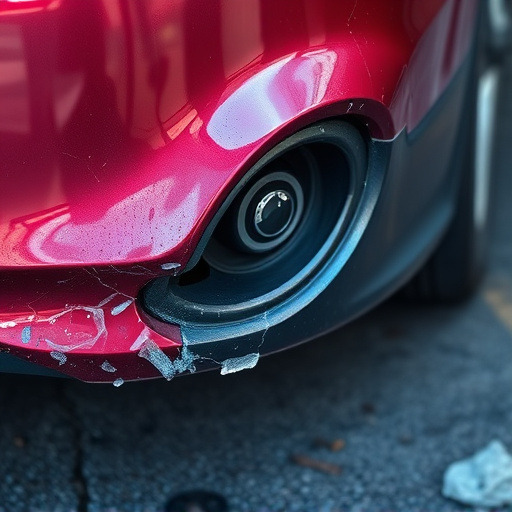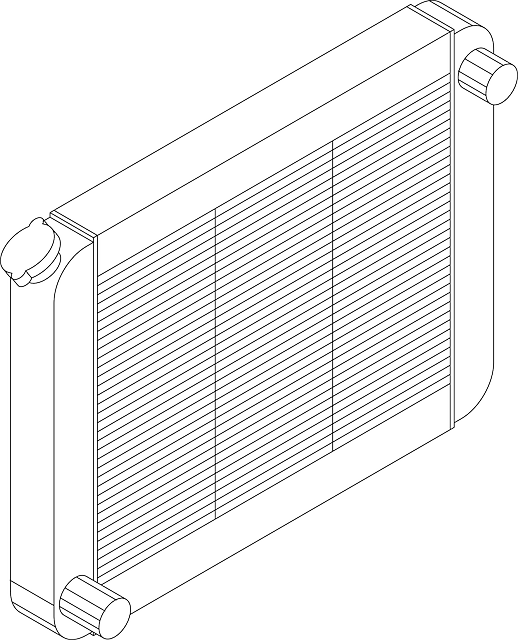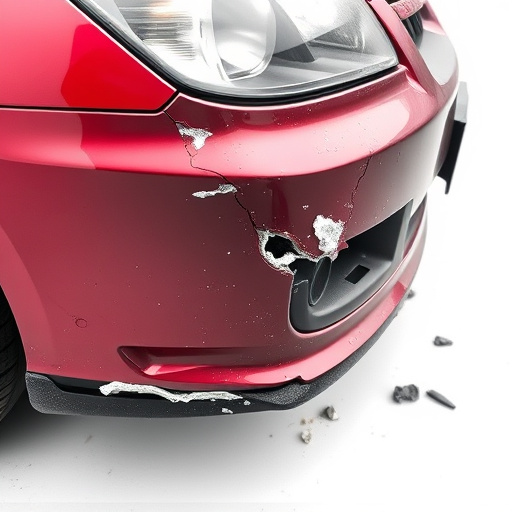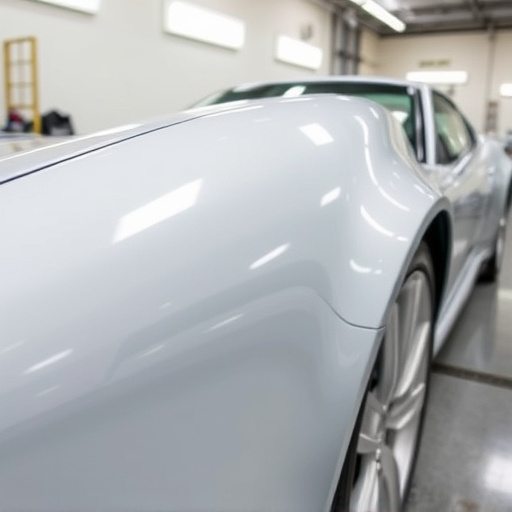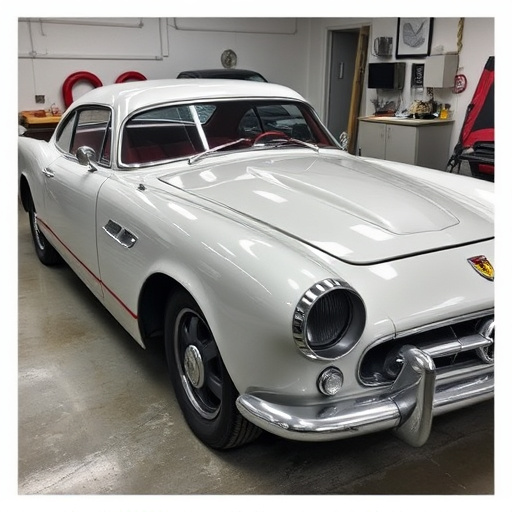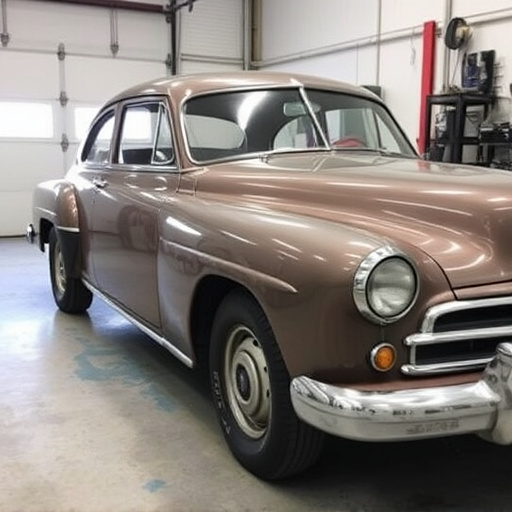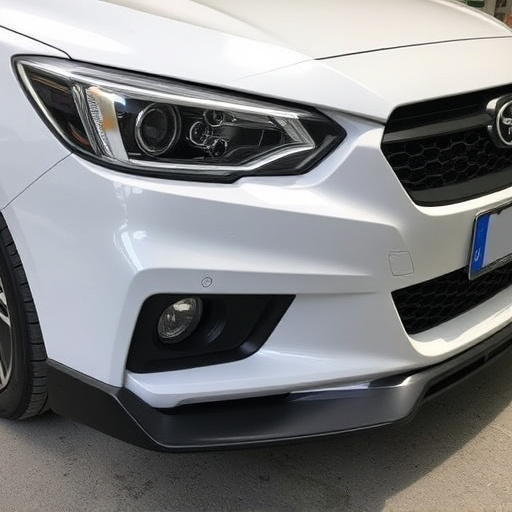Mercedes ADAS calibration utilizes laser alignment technology for precise sensor and camera calibration, enhancing safety features like collision avoidance, lane keeping assist, and adaptive cruise control. By projecting laser beams onto targeted attachments mimicking real-world scenes, technicians ensure optimal sensor performance, minimizing risks of auto collision repair, and contributing to safer driving experiences.
Mercedes ADAS (Advanced Driver Assistance Systems) calibration is evolving with cutting-edge techniques like laser-guided target alignment. This precise method ensures optimal sensor performance for features like adaptive cruise control and lane keeping assist. By selecting specific targets and using lasers to guide the process, calibrators achieve unparalleled accuracy. Discover the benefits, including improved system reliability and reduced setup time, while exploring challenges such as environmental factors and cost implications in this comprehensive guide on Mercedes ADAS calibration.
- Laser Alignment: Precise ADAS Calibration Technique
- Target Selection: Ensuring Optimal Sensor Performance
- Benefits and Challenges of Laser-Guided Calibration
Laser Alignment: Precise ADAS Calibration Technique

Mercedes ADAS calibration techniques have evolved significantly, with laser alignment emerging as a precise method for achieving optimal results. This innovative approach leverages advanced technology to ensure every sensor and camera in a Mercedes vehicle is accurately calibrated, enhancing safety features like collision avoidance systems, lane keeping assist, and adaptive cruise control.
By utilizing laser-guided target alignment, technicians can quickly and accurately adjust components within the Advanced Driver Assistance Systems (ADAS) of a Mercedes. This method involves projecting precise laser beams onto specific targets attached to the vehicle’s body or frame, allowing for minute adjustments in positioning. Such meticulous calibration is crucial for these systems to function seamlessly, ultimately contributing to safer driving experiences and reduced risks of auto collision repair or car collision repair incidents. Moreover, laser alignment facilitates efficient frame straightening, ensuring the vehicle’s structural integrity remains uncompromised.
Target Selection: Ensuring Optimal Sensor Performance

In Mercedes ADAS calibration, target selection plays a pivotal role in ensuring optimal sensor performance. The process begins with meticulously choosing alignment targets that simulate real-world scenarios, such as road signs, lane markings, and other vehicles. These targets are designed to be laser-guided, offering precise positioning and consistent results. By using high-quality, standardized targets, the calibration system can accurately map sensor data, enhancing the reliability and effectiveness of Advanced Driver Assistance Systems (ADAS).
Proper target selection goes beyond simple accuracy; it also involves considering environmental factors like lighting conditions, surface textures, and potential obstructions. A well-planned target arrangement ensures that every sensor in the vehicle receives comprehensive testing, from cameras to LiDAR sensors. This meticulous approach is crucial for a collision repair center or vehicle restoration shop aiming to deliver top-notch ADAS calibration services, ultimately contributing to safer driving experiences for Mercedes owners.
Benefits and Challenges of Laser-Guided Calibration
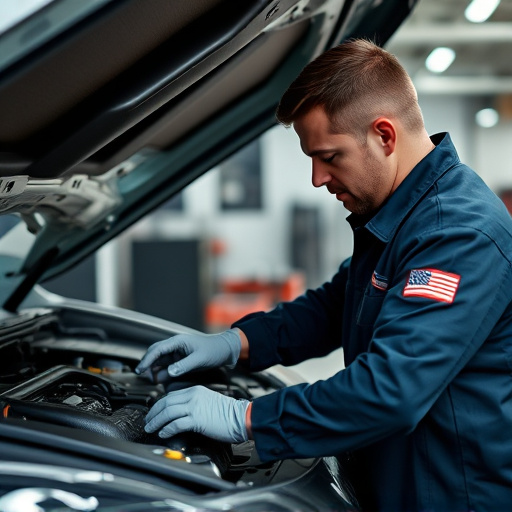
The use of laser-guided target alignment for Mercedes ADAS calibration offers several significant advantages. This precise method ensures exacting measurements and highly accurate adjustments, enhancing the overall performance and reliability of Advanced Driver Assistance Systems (ADAS). By providing a consistent and reliable reference point, laser guidance improves the accuracy of sensor calibrations, leading to better vehicle safety and improved driving experiences.
Despite these benefits, there are challenges associated with laser-guided calibration. Setting up and maintaining the laser system can be complex and time-consuming, requiring specialized equipment and skilled technicians. Additionally, environmental factors such as weather conditions or reflective surfaces in the vicinity of the calibration area can impact the accuracy of the laser measurements. However, with proper training and experience in automotive repair and collision repair services, these challenges can be effectively managed to ensure optimal Mercedes ADAS calibration.
Mercedes ADAS (Advanced Driver Assistance Systems) calibration using laser-guided target alignment offers precise and optimal sensor performance. This innovative technique, detailed in this article, highlights the benefits of meticulous target selection and overcomes challenges commonly associated with traditional calibration methods. By embracing laser technology, Mercedes can enhance safety features, ensuring a smoother and more secure driving experience for its customers.
